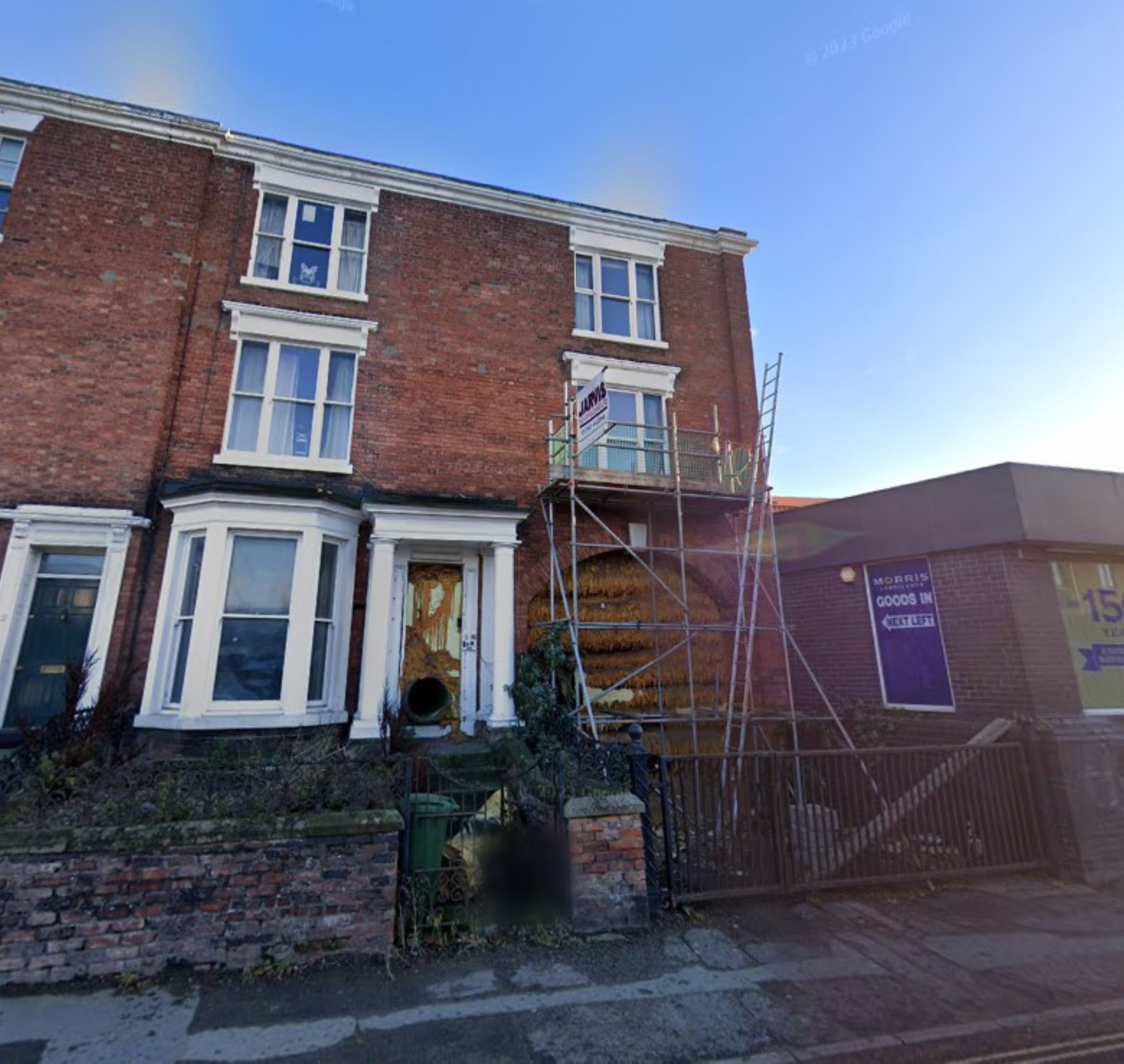How this homeowner took the unusual step of using geopolymer 'concrete' foam to avoid catastrophe
Residents were evacuated and the street was cordoned off when someone noticed the home was about to collapse — but an unusual solution was found to quickly prevent disaster

When a house was close to dangerously collapsing on a street in Shropshire, its owners chose to pump a geopolymer foam into the structure to make it safe.
The unusual but very quick safety precaution followed Shropshire Council closing off St Michaels Street in Shrewsbury amid concern that the building might fall down and injure someone. Residents were also evacuated from the area after the alarm was raised to the council about its condition.
After the emergency work was carried out to stabilise the house, the decision over the building's future sparked controversy among local residents. Now its owners must decide whether renovating the house is appropriate or whether it will have to be totally demolished.
What is geopolymer foam?
The geopolymer foam used in the building is a type of lightweight concrete that is produced using geopolymer binders instead of conventional cement-based binders.
Geopolymer binders offer several advantages over traditional cement binders, including reduced carbon emissions and improved durability.
The foam also has a significantly lower density compared to conventional concrete, making it suitable for applications where weight reduction is desired.
Geopolymer foam finds applications in various construction and building projects. It can be used as a lightweight fill material, thermal insulation for walls and roofs, void filling, and in precast concrete elements.
Bring your dream home to life with expert advice, how to guides and design inspiration. Sign up for our newsletter and get two free tickets to a Homebuilding & Renovating Show near you.
Why was the geopolymer foam needed?
Tenants were evacuated from the building after a resident raised the alarm and a structural engineer deemed the property a danger to the public.
Ed Potter, Shropshire Council’s Cabinet member for economic growth, regeneration and planning, said: "The safety to the public and the adjacent properties have been our key priority.
"This has been a unique and complex situation, and our teams have been working round the clock to help the owner choose the safest and best option to first secure the property from imminent collapse, and then look at the safest options to demolish the building, if it can’t be saved."
St Michael's Street is located within the Shrewsbury Conservation Area with the property appearing to have been built in the 1850s. There were also concerns about the building's archway not being able to maintain the weight of the upper floors of the house.
The foam was used to stabilise the property whilst engineers installed new steel framing and flooring into the property to make it secure.

How was the geopolymer foam pumped into the building?
Restek, a specialist concrete and ground remediation company based in Derbyshire, were commissioned by the council to immediately to stabilise the property.
The council commissioned the work as under the Housing Health and Safety Rating System (HHSRS) local authorities are obliged to rate houses which have potential hazards and if found must then act upon them, such as collapsing buildings.
The procedure involved filling the space beneath the building's archway and the corridor leading from the front door with a combination of pipes and geopolymer foam.
Tim Knight, the managing director, said they successfully accomplished this task within 48 hours as Knight explained the process: "We utilised two large pipes with a diameter of 600ml, stacked on top of each other. We inserted them using a telehandler and applied grout to secure them."
This meant the corridor and the arch were "merged into a single, solid, and uniform mass" using grouting "approximately 200 cubic meters" inside the arch. This created a hard structure to increase the building's load-bearing capacity, although, as a result, both areas were completely obstructed and inaccessible.
The move, despite its drawbacks, did give more time for a decision regarding the future of the building. Shropshire Council's structural engineers also confirmed that the building with the geopolymer foam added to stabilise it was safe enough for St Michael's Street to be reopened.

Controversy over the future of the property
The pipes and foam have now been removed from the free standing archway, however, debate has raged over whether to take down the property or not.
Rae Underhill-Jones, a resident of the street, observed that the floors at the rear of the building had been taken out, revealing a visible toilet through the resulting gap. Despite this, she is in favour of preserving the building. "You can clearly see from the other side of the road that the floor above the archway has been removed. It should be made safe so that a family can make use of it. There are people struggling to find decent accommodation," she said. "Not only that, but too many old houses with history are being knocked down instead of being repaired. When they get demolished that's another piece of history gone."
A former resident at the 'foam' house, Mary Steen, said: "I lived in the bottom flat in 1971, it was falling to pieces. Then strange mould and mushroom-like mould grew in the kitchen. It was overrun with mice. The council gave us a new home because it was unfit to live in."
Another resident, John Charles, agreed the house should be taken down, claiming: "It will soon fall apart again, have you seen inside it?" Meanwhile neighbour Matthew Lee Hancox added: "That place will be cheaper to demolish than save." But Michael Fisher claimed tearing down the house would be "a loss to the entire town".
A spokesperson for Shropshire Council added: “The owner, with the advice from structural engineers will make a decision whether to demolish or repair the property," although they did confirm further structural repairs will be completed later this month.

News Editor Joseph has previously written for Today’s Media and Chambers & Partners, focusing on news for conveyancers and industry professionals. Joseph has just started his own self build project, building his own home on his family’s farm with planning permission for a timber frame, three-bedroom house in a one-acre field. The foundation work has already begun and he hopes to have the home built in the next year. Prior to this he renovated his family's home as well as doing several DIY projects, including installing a shower, building sheds, and livestock fences and shelters for the farm’s animals. Outside of homebuilding, Joseph loves rugby and has written for Rugby World, the world’s largest rugby magazine.
